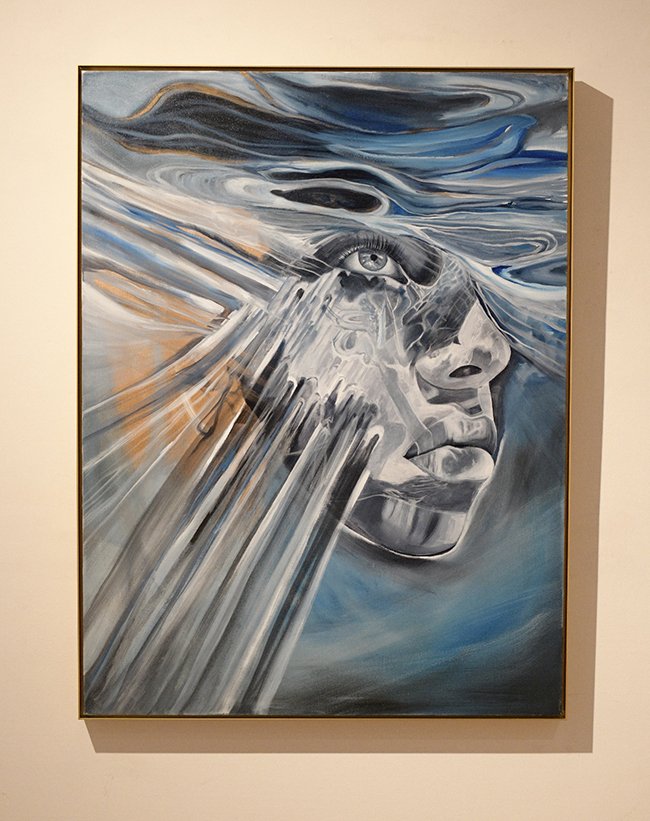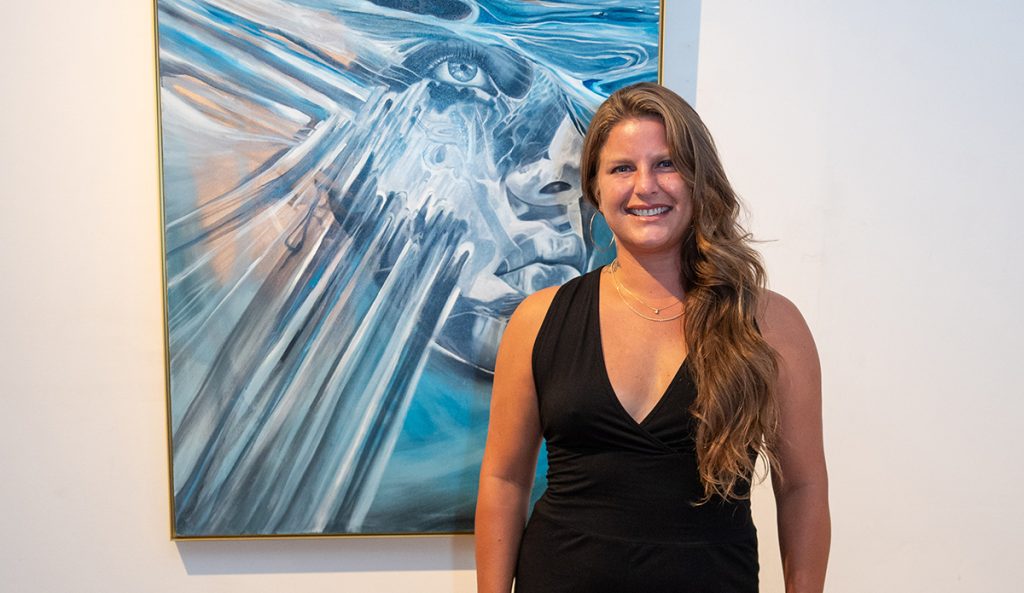Ashley Schriefer grew up on Long Island, New York, where her early connection to both the ocean and the arts set the tone for the work she creates today. She earned a Bachelor of Arts in Art Education from Flagler College in 2010 and later completed her Master of Fine Arts at LIU University in 2016. Alongside her studio practice, she teaches art at Roosevelt Middle School, guiding the next generation of creative thinkers. Her paintings have been seen across the country and abroad, in venues such as River of Dreams by Art Curator Magazine, New You at One Art Space in Tribeca, M.A.D.S. Gallery in Milan, and Spectrum Miami during Art Basel 2023. This summer marks her first solo exhibition with Artifact Projects. Across Long Island, her work has been on display in museums, galleries, hotels, and shops, and her voice continues to gain presence in contemporary publications.

Making the Invisible Visible
At the core of Schriefer’s practice is one essential question: what would it look like if our emotions could be seen? This is not just an abstract thought—it is the driving force behind her body of work. Her paintings seek to embody what lies beneath the surface, the tangle of feelings and reactions that shape us yet often remain hidden. She does not settle for straightforward portraiture. Instead, she layers imagery, marks, and fluid gestures to merge what is physical with what is emotional. In her hands, the human face and figure become maps where inner and outer worlds collide.
She approaches painting as an additive process, working in layers that build on one another. These layers create depth not just visually but conceptually, echoing the many levels at which we experience life—body, mind, and spirit. Portraits emerge, dissolve, and reassemble, often paired with imagery tied to her state of being at the time of creation. This openness to emotional influence keeps her practice alive and dynamic, shifting as her own experiences shift.
Between the Cellular and the Environmental
Schriefer’s influences are wide-ranging but always connected to lived experience. At times, she looks inward, exploring the intricate architecture of the human body at the cellular level. She translates biological forms into painterly marks that link our inner structures to the emotions that ripple through them. Other times, she looks outward, incorporating the ocean, water currents, or weather as both subject and metaphor.
The result is work that lives at a threshold. It is not purely figurative, nor entirely abstract. It is something in between, a hybrid language she has built over time to make the invisible visible. Her canvases hold both the portrait and the sensation, both the recognizable and the ambiguous, so viewers are invited to see their own emotions mirrored there.
Dialogue Through Art
For Schriefer, art is not only personal expression—it is an invitation to dialogue. By externalizing the inner life in visual form, she opens a space for viewers to confront their own hidden states. This is not about easy answers but about recognition. A face breaking apart into flowing marks may recall a moment of anxiety, a surge of grief, or a sudden release. The ocean layered into a portrait may summon the pull of memory, loss, or resilience.
Her hope is that these connections create conversations, not only between the viewer and the canvas but between individuals. In this way, her work suggests that while our struggles often feel solitary, they are in fact shared, and art becomes a bridge across those divides.
A Career in Motion
The growing scope of her exhibitions reflects the reach of her vision. From Long Island institutions like the Steinberg Museum and RIPE Art Gallery to international platforms like Milan’s M.A.D.S. Gallery and Spectrum Miami at Art Basel, her paintings are finding their way into broader contexts.
Her inclusion in diverse venues—from academic journals like MOJO to commercial spaces like Urban Outfitters—speaks to the versatility of her practice. She can hold space in both critical discourse and public life, bridging the gap between intellectual exploration and lived experience.
The Human Condition as Ongoing Subject
What ties all of this together is Schriefer’s refusal to see art as finished. For her, it is always in motion, always tied to the shifting state of being human. Emotions change, bodies change, environments change—and her work follows suit. This openness ensures her paintings remain relevant, not as static objects but as living reflections of the conditions we all share.
In the end, Ashley Schriefer’s paintings are less about answers than about presence. They hold the complexity of life, the visible and the invisible layered together, reminding us that art at its best is not about decoration but about recognition. In her work, the human condition is given form, and through that form, we glimpse both ourselves and each other.

